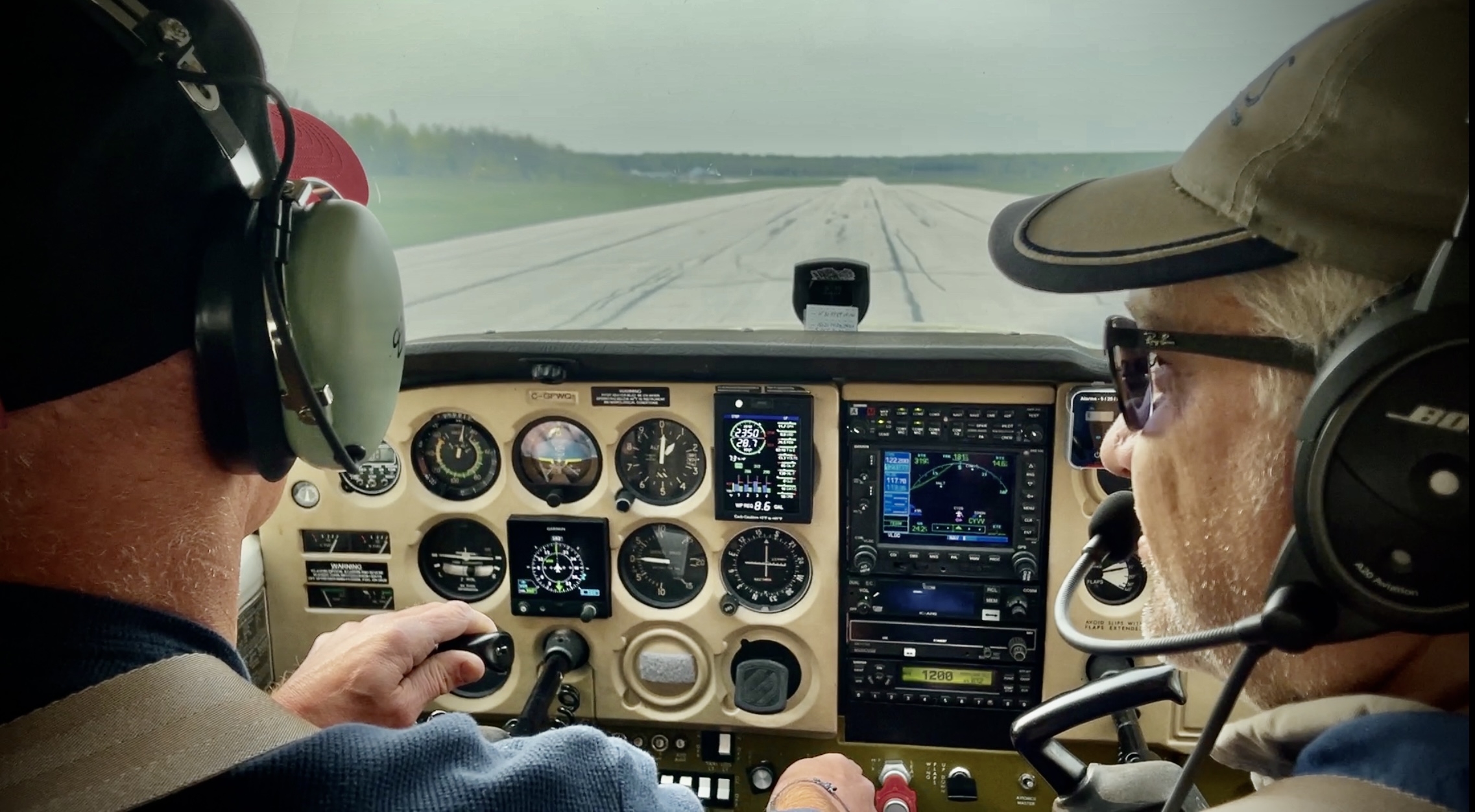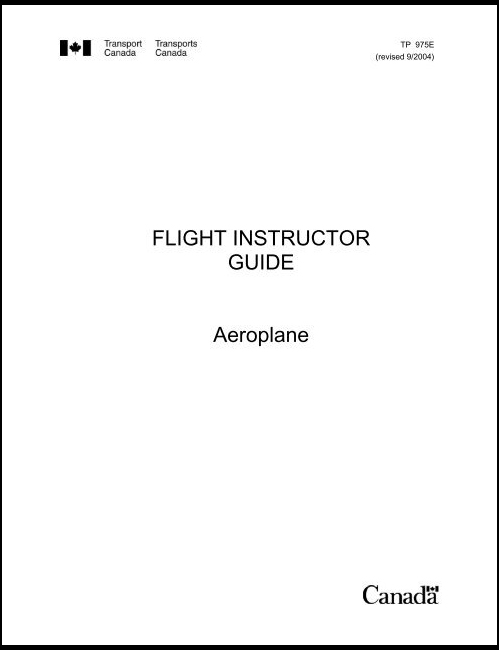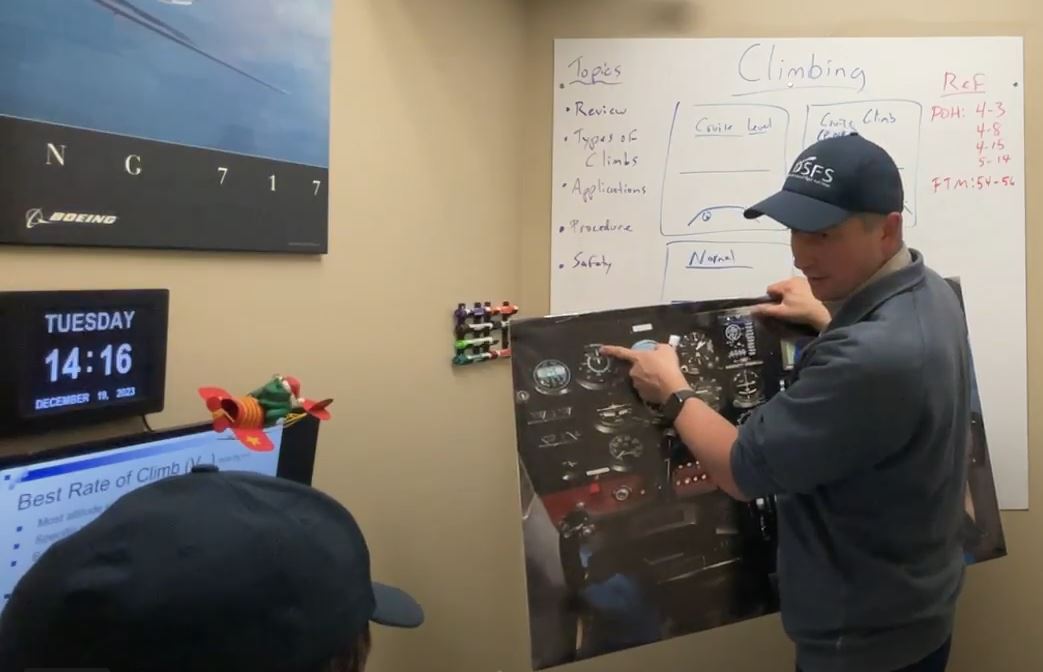Flight Instructor Rating
Owen Sound Flight Services is registered under the Career Colleges Act 2005
 You have a Commercial Pilot Licence, now what? Well there’s typically a couple of paths from this point, head North and find a small air carrier that can take you on with limited hours and experience, or add additional credentials to your licence, like a Flight Instructor Rating.
You have a Commercial Pilot Licence, now what? Well there’s typically a couple of paths from this point, head North and find a small air carrier that can take you on with limited hours and experience, or add additional credentials to your licence, like a Flight Instructor Rating.
Teaching flying is a challenging and rewarding career path, whether you are in it for a couple of years to build experience and flight time, or for a longer period of time to climb through the ranks from novice to expert. Imparting the skills and knowledge to the new aspiring pilot is transformative for both instructor and student; as you build new pilots you build confidence in yourself, as you see the progress your students make while measuring your successes from their accomplishments.
What is the Flight Instructor Rating?
 The Flight Instructor Rating is an additional accreditation on to your Commercial Pilot Licence. It is a training program that requires both a Written Exam and Flight Test, calling on information laid out by Transport Canada in the Flight Instructor Guide. At the successful conclusion of the program you are granted privileges as a Class 4 Flight Instructor, which allows you to teach flying under the supervision of a higher qualified flight instructor operating out of a Flight Training Unit (Flight School). The program is taught only by a Class 1 Flight Instructor, which is the highest qualification one can reach as an instructor.
The Flight Instructor Rating is an additional accreditation on to your Commercial Pilot Licence. It is a training program that requires both a Written Exam and Flight Test, calling on information laid out by Transport Canada in the Flight Instructor Guide. At the successful conclusion of the program you are granted privileges as a Class 4 Flight Instructor, which allows you to teach flying under the supervision of a higher qualified flight instructor operating out of a Flight Training Unit (Flight School). The program is taught only by a Class 1 Flight Instructor, which is the highest qualification one can reach as an instructor.
You know how to fly, but do you know how to teach? There are many skills you will learn in this program about student behaviour and teaching techniques that will allow you to take what you know, and bring another pilot to the same understanding and skill level in the cockpit. Understanding how to lay out lesson plans from simple to complex, implementing learning factors and using visual aids are all integral parts in helping you grow from a pilot, to a teacher.
 This program uses scenario based learning, where your Instructor will simulate different student personalities and abilities, while you work through Preparatory Ground Instruction, Pre and Post Flight Briefings and In Flight Instruction. You will learn the proper way to demonstrate an exercise in the air, evaluate student performance, correct their techniques and provide critique with a positive and encouraging voice that helps them develop. Throughout this program, you will undoubtedly have several revelations about how you were taught, and you will re-learn a number of the skills you have in a new light, under a new perspective from the right seat of the airplane as the one teaching it. You will grow a lot in your understanding of what it means to learn to fly throughout this program, and even more so with every passing hour teaching new students in the air and on the ground.
This program uses scenario based learning, where your Instructor will simulate different student personalities and abilities, while you work through Preparatory Ground Instruction, Pre and Post Flight Briefings and In Flight Instruction. You will learn the proper way to demonstrate an exercise in the air, evaluate student performance, correct their techniques and provide critique with a positive and encouraging voice that helps them develop. Throughout this program, you will undoubtedly have several revelations about how you were taught, and you will re-learn a number of the skills you have in a new light, under a new perspective from the right seat of the airplane as the one teaching it. You will grow a lot in your understanding of what it means to learn to fly throughout this program, and even more so with every passing hour teaching new students in the air and on the ground.
Teaching flying is a rewarding and empowering career, keeping your mind active and hands and feet razor sharp.
Pre-Requisites and Requirements
The Pre-Requisites to Start the Commercial Pilot Licence:
- Already have a Commercial Pilot Licence (we do that!)
- Be a minimum of 18 years old
- Have a valid Category 1 Aviation Medical
The Requirements to Complete the Commercial Pilot Licence:
- Have a valid Category 1 Aviation Medical
- Complete the required Ground Training and Flight Training
- Successfully complete a Written Exam and Flight Test
Link to the Canadian Aviation Regulations for the Class 4 Flight Instructor Rating
Groundschool
Groundschool for the Flight Instructor Rating (FIR) is done one on one in person with a Class 1 Flight Instructor.
FIR Groundschool involves a minimum of 25 hours of content including:
- Practical application of the basic principles of learning and techniques of instruction
- Preparation and use of lesson plans
- Procedures for planning and presenting preparatory ground instruction, pre-flight briefings, in-flight instruction, and post-flight debriefings
- Theory of flight required to teach the air exercises
- Aircraft flight manuals and aircraft operating limits
- Presentation of pilot decision-making concepts
- The use of the Transport Canada Flight Instructor Guide, Flight Training Manual, Canadian Aviation Regulations, Part IV and the appropriate Flight Test schedules and guides
In addition to the Transport Canada syllabus, students will learn:
- How to use Power Point to deliver Preparatory Ground Instruction
- How to manage and share student files in cloud based servers
- How to integrate technology into flight training for effect
Flight Training
The Flight Training and Experience Required for a Class 4 Flight Instructor Rating are as follows:
In order to obtain a Class 4 Flight Instructor Rating, a candidate shall complete in aeroplanes a minimum of 30 hours of dual flight instruction on overall pilot proficiency and the presentation of all exercises set forth in the Flight Instructor Guide and shall include a minimum of 5 hours of training in the teaching of instrument flight skills. A maximum 5 of the 30 hours may be conducted on an approved aeroplane simulator or flight training device.
Most students can complete the in air exercises in the minmum 30 hours outlined in the program however, if you are not familiar with the aircraft type or have not flown in some time, you can expect the time to be higher.
Flight Tests and Written Exams
In order to complete the Flight Instructor Rating program you must also complete:
- Flight Instructor Rating Aeroplane – Written Exam (AIRAF).
- The exam is a 3 hour, multiple choice type exam with 100 questions.
- The pass mark is 70%.
- Currently these exams are available in Toronto and Hamilton.
- Flight Instructor Rating Flight Test (With a designated Transport Canada Flight Test Examiner)
- The flight test is undertaken at the Owen Sound Airport
Hours and Cost Estimate
Hours and Cost Estimate based on the breakdown of hours as outlined in our program.
The total cost to complete the program is heavily dependent on student performance and the total hours it takes to reach the level of proficiency required to challenge the Written Exam and Flight Test. The following breakdown assumes students complete the course with 50 Hours of Ground Instruction and 30 Hours of in Flight Instruction. Students coming to us not having flown in some time, or not familiar with the Cessna 172M could see higher flight time to reach proficiency needed for a flight test. Students who struggle to understand or explain the ground theory required to be an effective instructor might expect additional time required on the ground to reach the proficiency required for the flight test.
See the Cost Breakdown at this link
Frequently Asked Questions
Q. Q and A coming soon.
